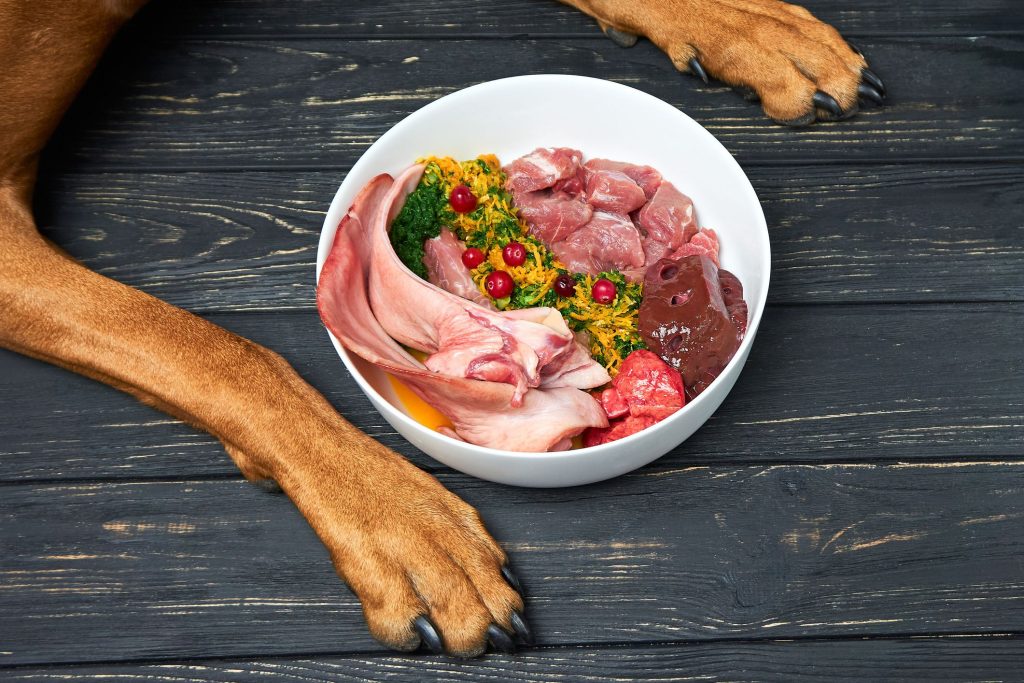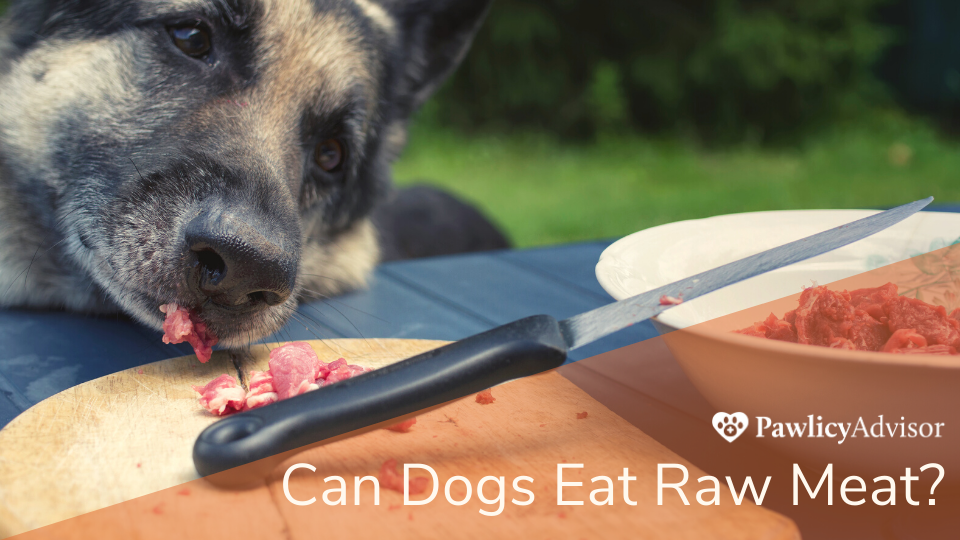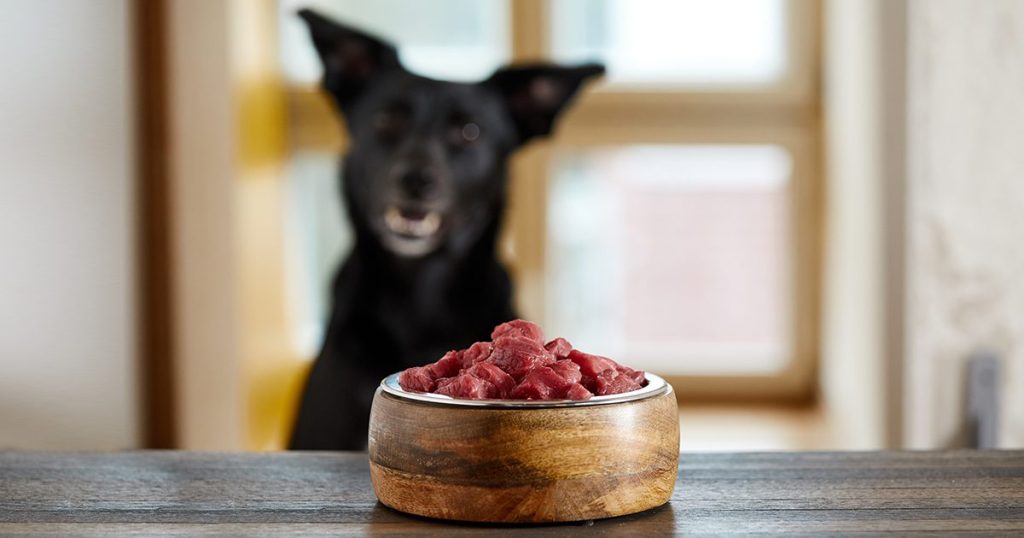Contents
- Benefits of Feeding Raw Meat to Dogs
- Risks and Concerns of Feeding Raw Meat to Dogs
- Choosing the Right Raw Meat
- Preparing Raw Meat for Dogs
- Supplementing Raw Meat Diet
- Transitioning to a Raw Meat Diet
- Feeding Guidelines for Raw Meat
- Common Misconceptions about Raw Meat
- Safety Measures for Feeding Raw Meat
- Consulting with a Veterinarian
If you’ve ever wondered whether it’s safe to feed your furry companion raw meat, you’re not alone. With the rise in popularity of raw diets for dogs, the question of whether you can feed your dog raw meat from the supermarket is a common one. In this article, we will explore the safety considerations and potential benefits of feeding your dog raw meat, providing you with the information you need to make an informed decision for your four-legged friend’s diet.

Benefits of Feeding Raw Meat to Dogs
Feeding your dog a raw meat diet can provide several benefits for their overall health and well-being. Here are some of the key advantages:
Improved Digestion
Raw meat is easier for dogs to digest compared to processed commercial dog food. The natural enzymes found in raw meat aid in breaking down food, allowing for better nutrient absorption and smoother digestion. This can help alleviate common digestive issues such as gas, bloating, and constipation, leaving your dog feeling more comfortable and satisfied after meals.
Healthier Skin and Coat
One noticeable benefit of feeding raw meat to dogs is the improvement in their skin and coat. Raw meat contains essential fatty acids, such as Omega-3 and Omega-6, which are crucial for maintaining healthy skin and a shiny coat. These fatty acids help reduce itching, flakiness, and dryness, promoting a lustrous coat and alleviating common skin problems like allergies and dermatitis.
Increased Energy Levels
A raw meat diet provides dogs with the necessary nutrients to support their energy needs. The high-quality proteins found in raw meat help build and maintain strong muscles, allowing dogs to thrive and engage in their daily activities with vitality. Additionally, the natural fats present in raw meat serve as a concentrated source of energy, keeping your canine companion fuelled throughout the day.
Risks and Concerns of Feeding Raw Meat to Dogs
While there are numerous benefits to feeding raw meat to dogs, it is important to be aware of potential risks and concerns associated with this diet. Understanding these factors will help you make an informed decision for your pet’s well-being.
Bacterial Contamination
Raw meat, like any other raw food, carries the risk of bacterial contamination, including salmonella and E. coli. These bacteria can pose serious health risks to both dogs and their human companions. It is crucial to handle and store raw meat properly to minimize the chances of bacterial contamination and ensure the safety of everyone in the household.
Unbalanced Diet
Another concern of feeding raw meat to dogs is the potential for an unbalanced diet. While raw meat provides dogs with essential nutrients, it may lack certain vitamins, minerals, and fiber. To ensure a balanced diet, it is essential to incorporate a variety of protein sources, fruits, vegetables, and supplements into their meals. Consulting with a veterinarian or a canine nutritionist can help you create a well-rounded raw meat diet that meets your dog’s specific nutritional needs.
Toxicity Risks
Certain types of raw meat can contain toxins that are harmful to dogs. For example, feeding dogs raw fish can expose them to parasites such as tapeworms or bacteria like Vibrio. Similarly, raw pork carries the risk of transmitting the parasitic infection called trichinosis. It is crucial to choose suitable types of raw meat and properly prepare them to minimize the chances of exposing your dog to potentially harmful toxins.

Choosing the Right Raw Meat
To ensure the health and safety of your dog, it is important to select the right raw meat. Here are some factors to consider:
Quality and Freshness
When choosing raw meat for your dog, opt for high-quality cuts from trusted sources. Look for fresh meat without any signs of spoilage, such as a foul odor or discolored appearance. Quality raw meat will provide the necessary nutrients while minimizing the risk of bacterial contamination.
Organic and Grass-Fed Options
Consider opting for organic and grass-fed raw meat whenever possible. Organic meat is free from antibiotics, hormones, and pesticides, providing a healthier option for your dog. Grass-fed meat contains higher levels of beneficial fatty acids and is generally more nutrient-dense, making it an excellent choice for a raw meat diet.
Variety of Protein Sources
To ensure a well-rounded diet, include a variety of protein sources in your dog’s raw meat meals. Rotate between meats such as chicken, beef, turkey, lamb, and fish to provide a broad spectrum of essential amino acids and nutrients. This variety will help prevent dietary imbalances and satisfy your dog’s taste preferences.
Preparing Raw Meat for Dogs
Properly handling and preparing raw meat for your dog is crucial to maintain its safety and nutritional value. Follow these guidelines to ensure best practices:
Safe Handling Practices
When handling raw meat, always practice good hygiene to prevent the spread of bacteria. Wash your hands thoroughly with soap and water before and after handling raw meat. Use separate cutting boards, knives, and utensils when preparing raw meat to avoid cross-contamination with other foods. Keeping a clean working surface and sanitizing utensils will help minimize the risk of bacterial contamination.
Proper Food Storage
Raw meat should be stored at temperatures below 40 degrees Fahrenheit to prevent bacterial growth. Use airtight containers or freezer bags to store raw meat in the refrigerator or freezer. Follow the recommended storage times and guidelines to ensure your dog’s food remains fresh and safe for consumption. Regularly clean and sanitize storage containers to minimize the risk of bacterial contamination.
Correct Portion Sizes
Feeding the appropriate portion sizes is essential to maintain a healthy weight and support your dog’s nutritional needs. Consult with a veterinarian or a canine nutritionist to determine the ideal portion sizes based on your dog’s weight, age, and activity level. Dividing the raw meat meals into proper portions ensures your dog receives the necessary nutrients without the risk of overfeeding or underfeeding.

Supplementing Raw Meat Diet
While raw meat provides many essential nutrients, it may benefit from certain supplements to ensure a balanced diet. Consider the following:
Balancing Calcium and Phosphorus
Raw meat alone may not provide adequate levels of calcium and phosphorus, which are crucial for strong bones and teeth. Adding a calcium supplement, such as finely ground eggshells or a commercially available calcium supplement for dogs, can help maintain the proper balance and prevent deficiencies.
Adding Fruits and Vegetables
Incorporating fruits and vegetables into your dog’s raw meat diet offers additional vitamins, minerals, and fiber. It is important to choose dog-friendly fruits and vegetables, such as carrots, apples, and leafy greens, and introduce them gradually into your dog’s meals. Chop or puree them for better digestion and nutrient absorption.
Including Essential Nutrients
To ensure your dog receives all the necessary nutrients, consider adding essential fatty acids, probiotics, and joint supplements. Omega-3 fatty acids, commonly found in fish oils, provide numerous health benefits, including supporting heart health and reducing inflammation. Probiotics can promote a healthy gut microbiome, aiding in digestion and boosting the immune system. Joint supplements, such as glucosamine and chondroitin, can support joint health and mobility, especially in senior dogs or those prone to joint issues.
Transitioning to a Raw Meat Diet
Transitioning your dog to a raw meat diet should be done gradually to avoid any digestive upsets. Follow these steps for a smooth transition:
Gradual Introduction
Start by introducing small amounts of raw meat into your dog’s regular meals. Mix a small portion of raw meat with their current food, gradually increasing the ratio of raw meat over several weeks. This slow transition allows your dog’s digestive system to adapt to the new diet without causing any digestive discomfort.
Monitoring Digestive Changes
As you transition your dog to a raw meat diet, closely monitor any changes in their digestion. Keep an eye on their stool consistency, frequency, and any signs of gastrointestinal upset. It is normal for dogs to experience slight adjustments in their digestive patterns during the transition, but persistent diarrhea, vomiting, or discomfort should be discussed with a veterinarian.
Consulting with a Vet
Before starting a raw meat diet, it is essential to consult with a veterinarian, especially if your dog has underlying health conditions or special dietary needs. A veterinarian can guide you on the nutritional requirements specific to your dog, help you create a balanced raw meat diet plan, and monitor your dog’s progress to ensure their overall health and well-being.
Feeding Guidelines for Raw Meat
Establishing proper feeding guidelines is crucial to prevent overfeeding or underfeeding. Consider these factors:
Feeding Amounts and Frequency
The amount of raw meat your dog requires depends on various factors, including their weight, age, activity level, and metabolism. Refer to feeding guidelines provided by your veterinarian or canine nutritionist for recommended portion sizes. Most dogs thrive on two meals per day, but the frequency can be adjusted based on your dog’s individual needs.
Monitoring Weight and Condition
Regularly monitor your dog’s weight and body condition to ensure they are maintaining a healthy weight. Adjust the portion sizes accordingly if your dog is gaining or losing weight. Feeling their ribs and waistline can help determine if your dog is at an ideal weight.
Adjusting Diet as Needed
A dog’s nutritional needs may change over time due to age, activity level, or any health conditions. Regularly evaluate their diet and consult with a veterinarian or canine nutritionist if adjustments are necessary. Monitoring your dog’s overall health and well-being will help ensure the raw meat diet continues to meet their specific nutritional requirements.
Common Misconceptions about Raw Meat
There are several misconceptions surrounding feeding raw meat to dogs. Let’s address some of the most common ones:
Myth: Raw Meat Will Make My Dog Aggressive
Feeding your dog raw meat does not automatically make them aggressive. Aggression in dogs is influenced by a variety of factors such as genetics, training, socialization, and overall health. Raw meat alone does not cause aggressive behavior.
Myth: Raw Meat Automatically Improves Dental Health
While chewing on raw meaty bones can help remove plaque and tartar buildup, solely feeding raw meat does not automatically improve dental health. Regular dental care, such as teeth brushing and professional cleanings, is still necessary to maintain your dog’s oral hygiene.
Myth: Raw Meat Alone is Sufficient Nutrition
Feeding raw meat alone may not provide a balanced and complete diet for dogs. As mentioned earlier, it is essential to incorporate a variety of protein sources, fruits, vegetables, and supplements to ensure your dog receives all the necessary nutrients. A properly formulated raw meat diet should be well-rounded and include all the essential components for optimal canine nutrition.

Safety Measures for Feeding Raw Meat
To ensure the safety of your dog and everyone in your household, follow these safety measures when feeding raw meat:
Washing Bowls and Utensils
After each meal, thoroughly wash your dog’s bowls, utensils, and any surfaces they come into contact with. Use hot, soapy water to remove any traces of raw meat and bacteria. Regularly sanitizing these items will prevent the growth and spread of harmful bacteria.
Preventing Cross-Contamination
To avoid cross-contamination, keep raw meat and any surfaces it touches separate from other food items. Store raw meat in designated containers or areas in the refrigerator or freezer. When preparing raw meat meals, use separate cutting boards, knives, and utensils that are only used for raw meat to prevent the risk of spreading bacteria.
Handling and Disposing of Raw Meat Waste Safely
Dispose of any raw meat waste promptly and properly. Double-bag raw meat scraps or trimmings in leak-proof bags before discarding them in a secure trash container. This prevents animals or pests from accessing the raw meat waste and reduces the risk of contamination outside of the household. Wash your hands thoroughly after handling raw meat waste.
Consulting with a Veterinarian
Before starting or making any significant changes to your dog’s diet, it is crucial to consult with a veterinarian. They can provide personalized guidance based on your dog’s individual needs and ensure their health and nutritional requirements are met. Here’s how a veterinarian can help:
Discussing Individual Dog’s Needs
A veterinarian will take into account your dog’s specific needs, such as age, breed, activity level, and any existing health conditions. They can tailor a raw meat diet plan that addresses these unique requirements to support your dog’s overall health and well-being.
Reviewing Health History
A veterinarian will review your dog’s health history to identify any underlying health conditions or dietary sensitivities that need to be considered when transitioning to a raw meat diet. They can offer guidance on specific adjustments or supplements to support your dog’s individual health requirements.
Monitoring Nutritional Requirements
A veterinarian can monitor your dog’s nutritional requirements and make any necessary adjustments as they grow, age, or experience changes in their health. Regular check-ups allow for ongoing evaluation of their diet to ensure they are receiving adequate nutrition for optimal health.
In conclusion, feeding raw meat to dogs can offer various benefits, including improved digestion, healthier skin and coat, and increased energy levels. However, it is essential to be aware of the risks and concerns associated with a raw meat diet, such as bacterial contamination, an unbalanced diet, and potential toxicity risks. By choosing the right raw meat, practicing safe handling practices, supplementing the diet when necessary, transitioning gradually, following feeding guidelines, and considering safety measures, you can safely provide your dog with a well-rounded raw meat diet. Remember to consult with a veterinarian to ensure the diet meets your dog’s individual nutritional needs and to address any concerns or questions along the way.










